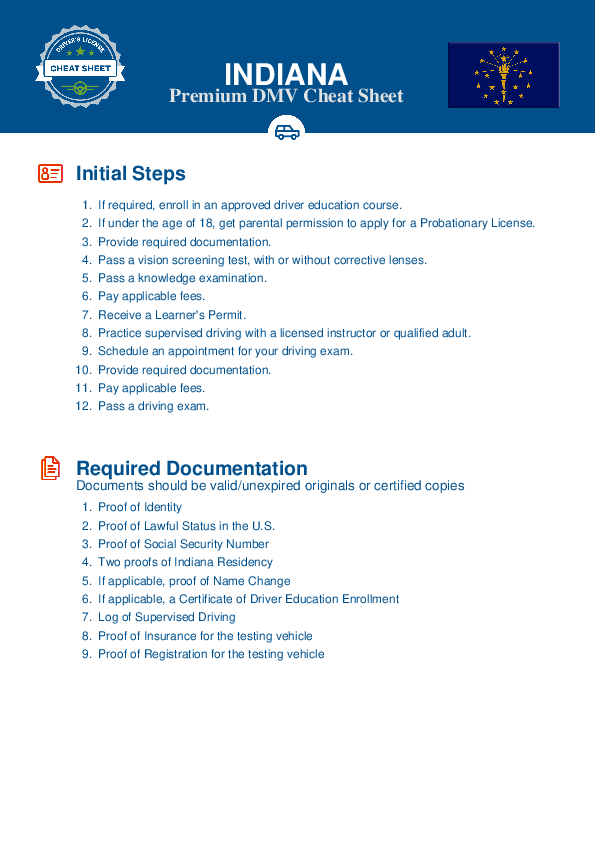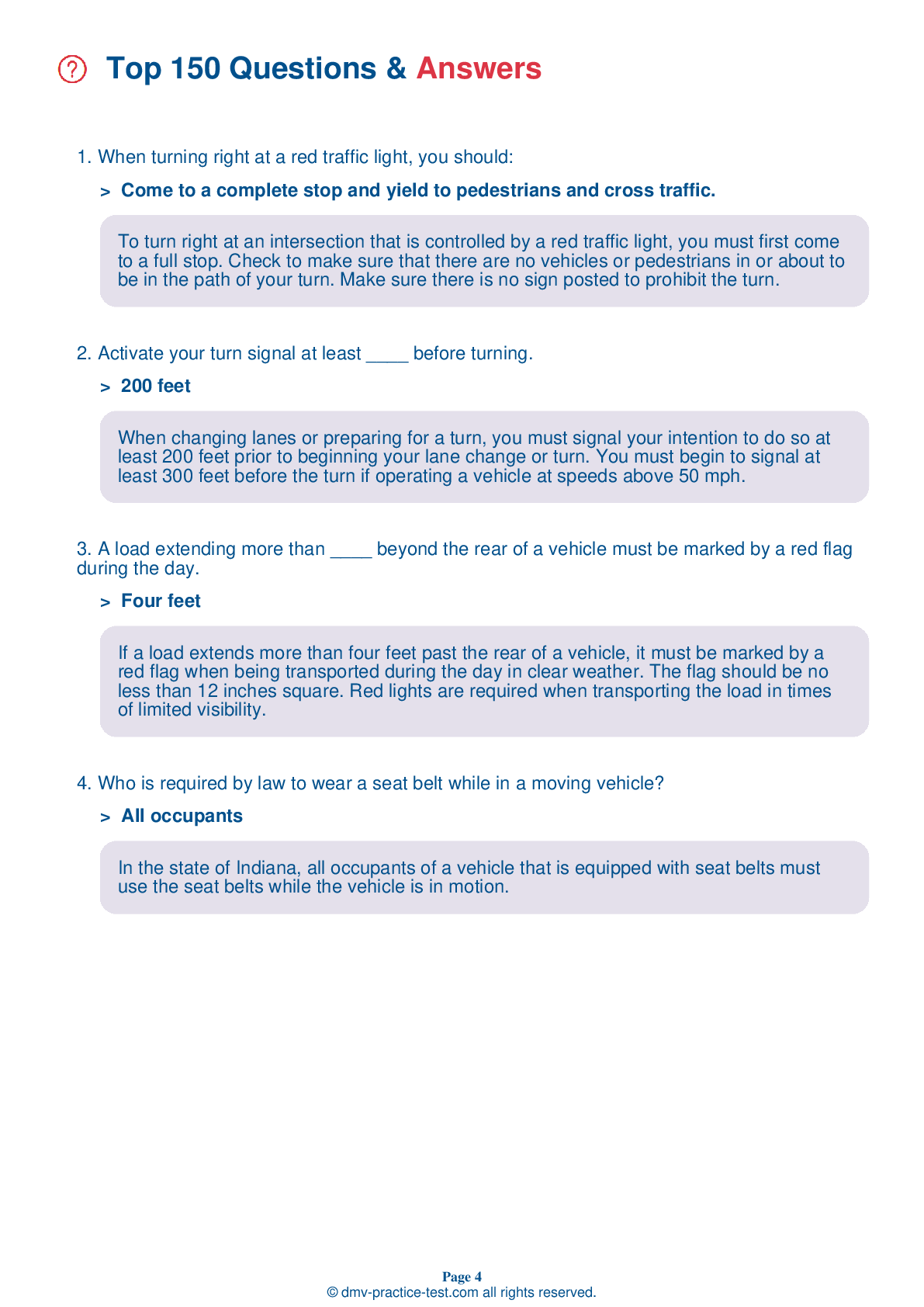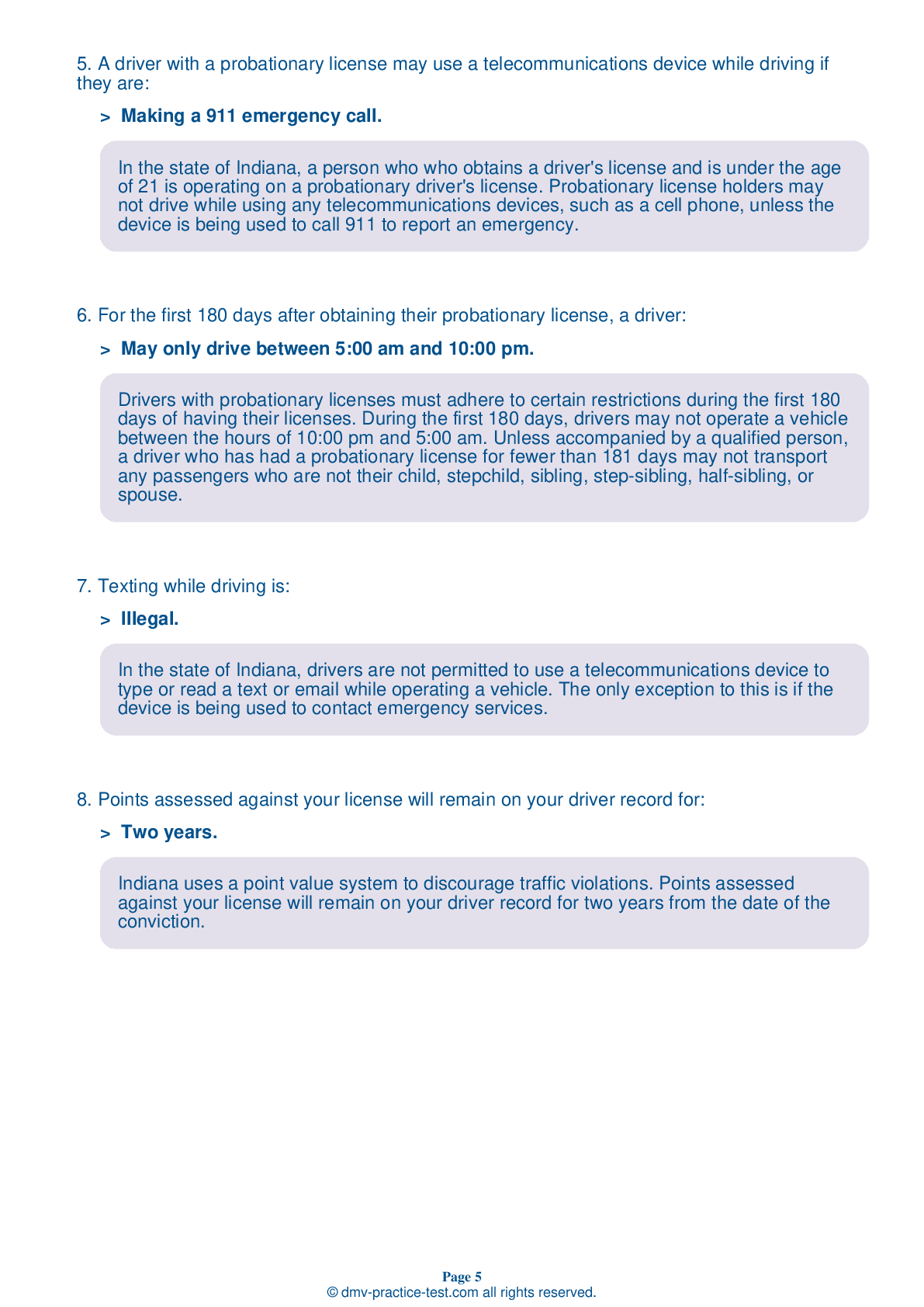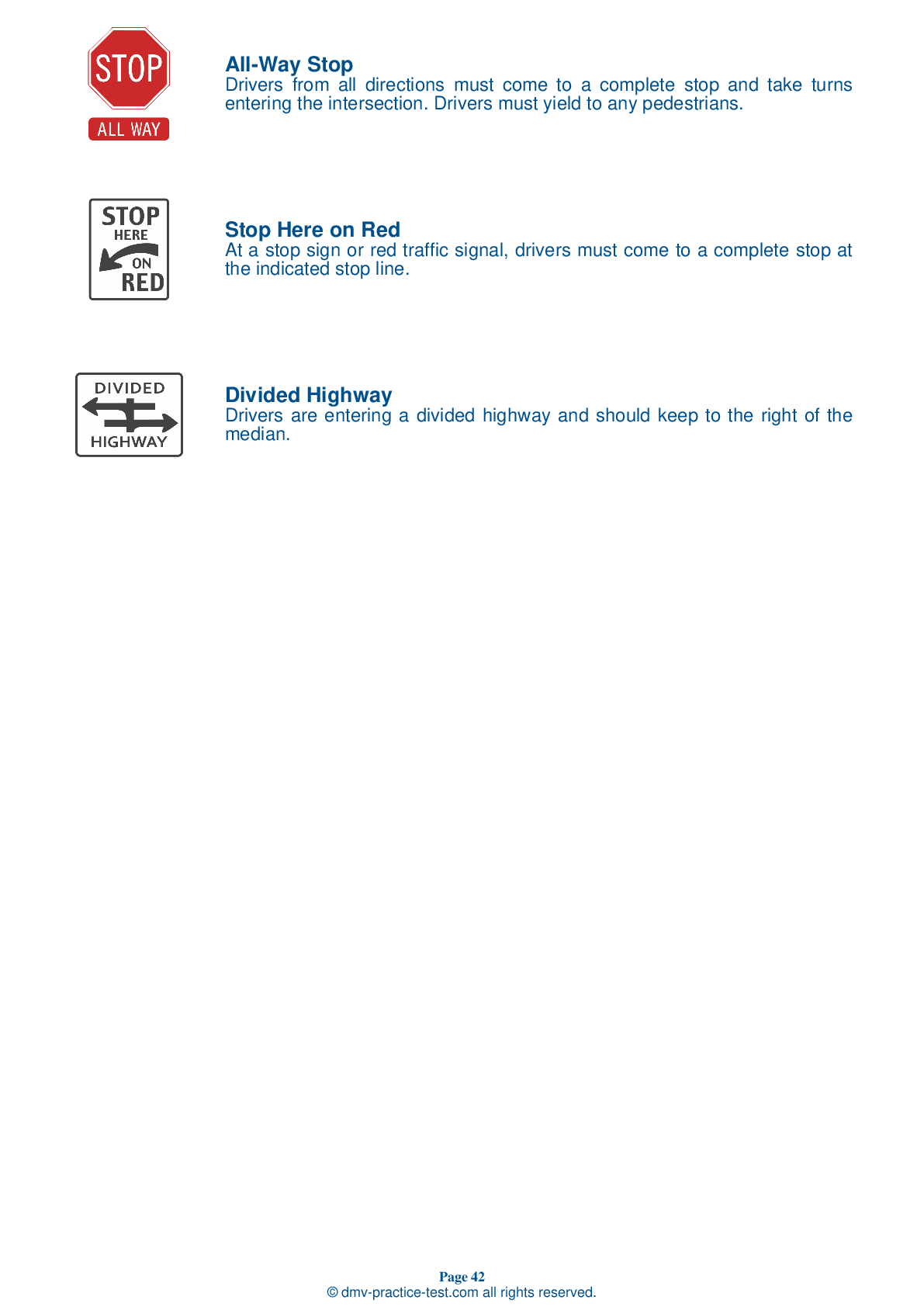FREE Indiana DMV Practice Test #9 Page 5 of 5
This set of Indiana DMV practise tests has been updated for January 2025. It includes questions based on the Indiana Driver Handbook's most significant traffic signals and laws for 2025. Use actual questions that are very similar (often identical!) to the DMV driving permit test and driver's licence exam to study for the DMV driving permit test and driver's licence exam.
On the practise exam, each question gets a tip and explanation to help you remember the concepts. The written component of the official Indiana DMV test will include questions about traffic rules, traffic signs, and driving statutes, as well as information from the Driver Handbook.
To obtain a passing grade, you must correctly answer 44 of the 50 questions. Take our DMV practise exam to help you prepare for your Indiana instruction permit or driver's licence.
The DMV exam is available in several languages.
Using any kind of testing assistance will result in an automatic fail, and the DMV may take additional action against your driver's licence, so stay away from it.
39 . This sign means:

This sign warns drivers that if they park in the indicated area, their vehicle is subject to be towed.
40 . To help prevent crashes, you should:
Crashes often happen because one driver does something that other road users are not expecting. You should communicate with other motorists, bicyclists, and pedestrians by doing things like signaling when slowing down, stopping, or changing direction. Use your emergency signals or horn when appropriate.
41 . This sign means:
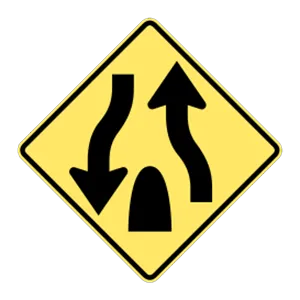
This sign warns drivers that the divided highway ends ahead.
42 . You are entering a crowded freeway. What should you do to merge into traffic?
Use the entrance ramp to accelerate to the speed of freeway traffic and yield to traffic already using the freeway. Before entering traffic, use your mirrors and check your blind spots to verify that you have room to safely merge.
43 . When driving on roads that may be slippery:
You should avoid making any sudden changes in speed or direction when driving on a slippery surface. Reduce your speed on slippery roads and do not use cruise control.
44 . Two solid yellow lines on the pavement mean:
Yellow lines tell you that the traffic on the other side of the lines is moving in the opposite direction. You should never cross two solid yellow lines to pass from either direction.
45 . This sign means:
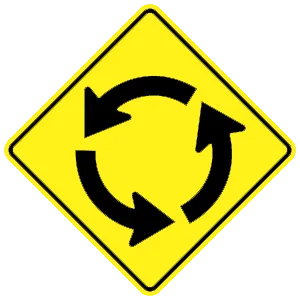
This sign indicates that a roundabout is ahead. Enter a roundabout at a low speed and yield to existing traffic.
46 . This sign is used to prevent:
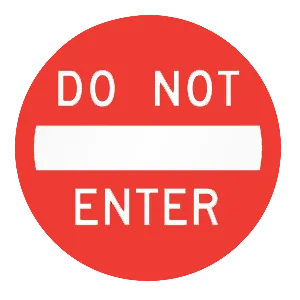
This sign warns that a road has one-way traffic and you must not enter from your current direction.
47 . Your vehicle strikes an unattended parked vehicle and you cannot locate the vehicle’s owner. You:
Upon striking an unattended vehicle, stop and try to locate the owner. If you cannot find the owner, leave a written notice containing your name, your address, and the circumstances of the accident.
48 . When riding in a vehicle, small children:
Special child seats are available for children who are too small to wear regular safety belts. No person is strong enough to safely hold onto a child of any size during an accident or sudden stop. Never allow a child to ride in a vehicle unless they are properly fastened into a seat.
49 . A fully loaded tractor-trailer traveling at 55 mph could take up to ____ to come to a complete stop.
Tractor-trailers take longer distances to stop than smaller cars traveling at the same speed. A fully loaded tractor-trailer may take almost 400 feet to come to a complete stop when driving at 55 mph.
50 . This road sign means:
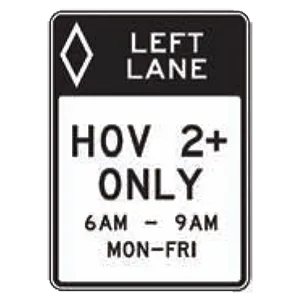
This sign marks a high occupancy vehicle (HOV) lane. HOV lanes are reserved for use by buses and vehicles with a driver and one or more passengers, as indicated on the sign.
See the exact questions that will be on the 2025 Indiana DMV exam.
99.2% of people who use the cheat sheet pass the FIRST TIME
LT gives us an insight on how the cheat sheet provided her with all the study questions she needed before taking her test.
Joe initially studied with the handbook and failed his test, he eventually found us online, studied and pass his test the first time around.
